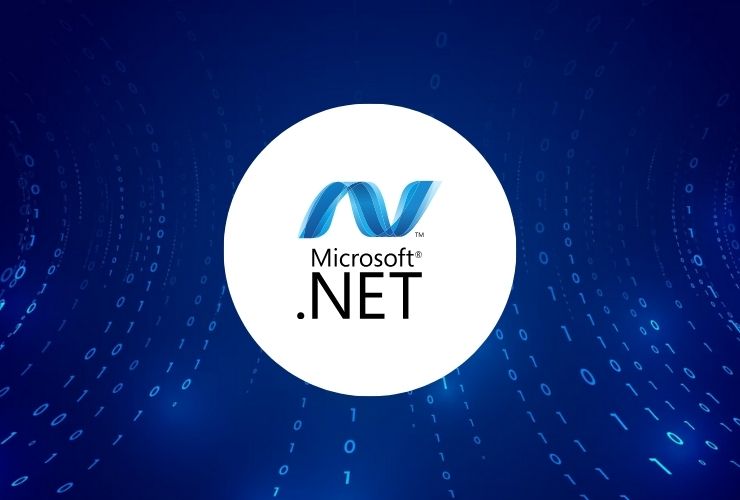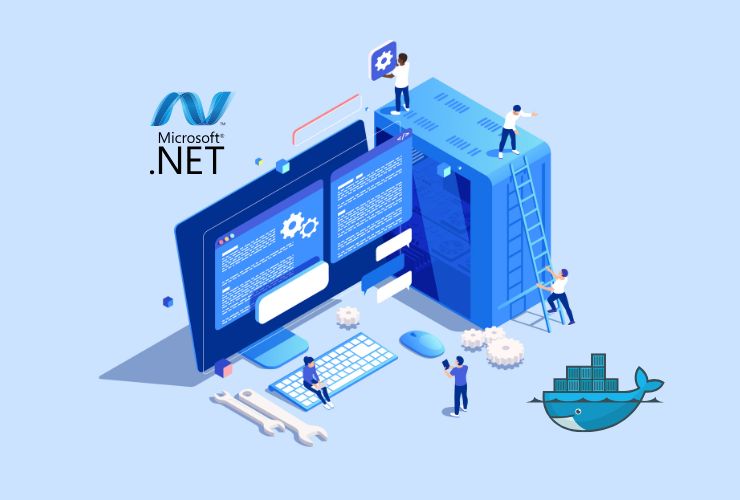Microservices architecture has redesigned modern software development by empowering businesses to build scalable, flexible, and maintainable applications. This is in contrast to monolithic applications whereby developers cannot build separate, loosely coupled services that join together seamlessly. Using.NET, developers can take advantage of a powerful ecosystem of frameworks, tools, and cloud integrations to build efficient and robust applications.
In this blog, we will go into benefits, architectural patterns and best practices, and deployment strategies as a way to develop enterprise-grade applications using microservices in .NET.
What are Microservices?
Microservices is an architectural style that structures an application as a collection of small, independent services that communicate over well-defined APIs. Each microservice is responsible for a specific business functionality and can be developed, deployed, and scaled independently.
Key Features of Microservices:
- Independent Deployment : Any updates to or modifications for any micro-service can be conducted without impacting others, thereby diminishing the risk-related aspect of a deployment.
- Scalability : Individual services might scale up as well as scale down according to traffic and the demand.
- Agnostic of Technology: Microservices allow being developed upon different programming languages, frameworks or databases. High Maintainability Applications become smaller in size, easy to manage. Debugging easier, updating not difficult.
- Fault Isolation: Failures in one service do not necessarily affect the whole application, thus ensuring higher resilience.
- Continuous Delivery & DevOps Friendly: Microservices support CI/CD pipelines and make it easier to automate builds, testing, and deployments.
Why Use.NET for Microservices Development?
.NET is very popular, and mature, used for enterprise-level application development, and provides one of the collections of tools, frameworks, and libraries that are easy to create microservices here’s why:.NET good for microservices:
- ASP.NET Core: Extremely lightweight, cross-platform framework in developing microservices-based APIs highly efficient.
- gRPC: High-performance RPC framework contract based for seamless efficient service-to-service communication.
- Docker & Kubernetes:.NET fully supports containerization with Docker as well as orchestration with Kubernetes, so there is nothing extra to make their deployment a mess.
- Azure Kubernetes Service (AKS): A managed Kubernetes platform that makes it easier to deploy, scale, and manage microservices.
- Dapr (Distributed Application Runtime): A framework that makes it easier to develop distributed systems with.NET.
- MassTransit & NServiceBus: Frameworks that make it easier to manage inter-service communication with messaging queues.
Microservices Architecture in.NET
Building microservices with.NET is achieved by following simple architectural principles for efficiency, maintainability, and scalability.
1. Decomposing Services
Application decomposition in services aligned along business functionality. Here are some samples of it-
- User Service: Concerned with authentication, authorization, and user management.
- Order Service: Order creation, updating, and tracking are managed within this service.
- Payment Service: Secure payment processes.
- Inventory Service: Manages stock levels and updates.
- Shipping Service: Handles logistics and order fulfillment.
2. API Gateway Pattern
An API Gateway, like Ocelot in.NET, is a single entry point for external clients. It handles authentication, request routing, rate limiting, and load balancing, thus making it more efficient and secure.
3. Service Communication
Microservices in.NET can communicate in several ways:
RESTful APIs – For synchronous communication between services.
gRPC – High-performance communication protocol that is faster than REST.
Event-driven messaging – Using RabbitMQ, Kafka, or Azure Service Bus for asynchronous event-driven communication.
4. Database Per Service
Microservices should not be tightly coupled, so they should have their own databases. Data consistency between services can be ensured through the CQRS pattern and Event Sourcing.
5. Authentication & Security
To secure the microservices, use OAuth 2.0 and OpenID Connect. The authentication and authorization management can be achieved by identity providers such as Azure AD B2C, IdentityServer4, or Okta.
Best Practices for Building.NET Microservices
- Use Lightweight Frameworks – Favor ASP.NET Core to have a benefit of better performance and modularity.
- Use Circuit Breakers & Resilience – Implement Polly for transient failures and service improvement in reliability.
- Use Containerization with Docker – Package each microservice into a Docker container for better portability.
- Service Discovery and Load Balancing – Use Consul or Kubernetes to dynamically discover services and distribute traffic.
- Centralized Logging & Monitoring – Use Serilog, ELK Stack, or Azure Application Insights to effectively monitor microservices.
- Automated Testing & CI/CD Pipelines – Apply unit tests, integration tests, and CI/CD tools like Azure DevOps, GitHub Actions, or Jenkins for smooth deployment.
Deploying.NET Microservices
1. Containerization with Docker
- Package each microservice as a Docker image.
- Define dependencies in a Dockerfile.
2. Orchestration with Kubernetes
- Deploy microservices in Kubernetes clusters.
- Use Helm charts and Kubernetes manifests for easier management.
- Azure Kubernetes Service (AKS) or Amazon EKS provides managed Kubernetes solutions.
3. Serverless Deployment by using Azure Functions
- Use Azure Functions for smaller services to avoid infrastructure overhead.
4. Continuous Integration & Deployment (CI/CD)
- Streamline builds, testing, and deployments with the use of Azure DevOps, GitHub Actions or Jenkins.
- Use blue-green deployments or canary releases for zero-downtime updates.
Conclusion
It empowers powerful approaches towards building scalable, maintainable and high-performance applications using microservices with.NET. Enterprise ready microservices support modern business needs by exploiting.NET along with ASP.NET Core, gRPC, Kubernetes, Docker, as well as various cloud platforms.
Together with best practices, robust ecosystem and strategic deployment methods,.NET enables businesses to build and manage microservices-driven applications with the ability to scale further into the future with agility and resilience.
Microservices with.NET: Microservices allow enterprises to make improvements in the development process and enhance application performance, scaling with ease to keep up with growing business demands.














